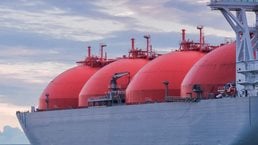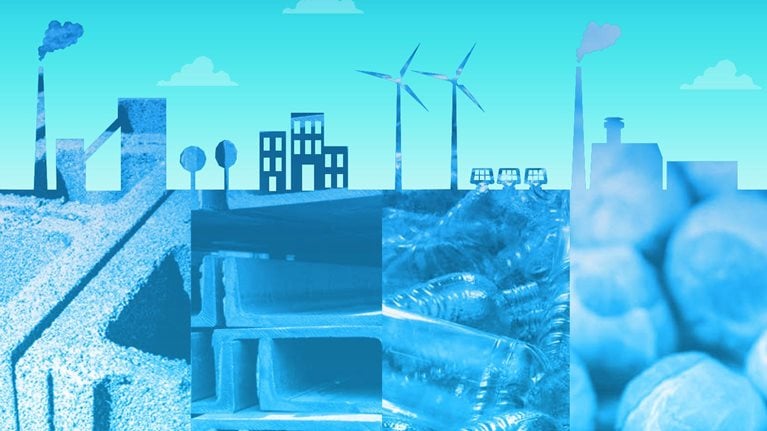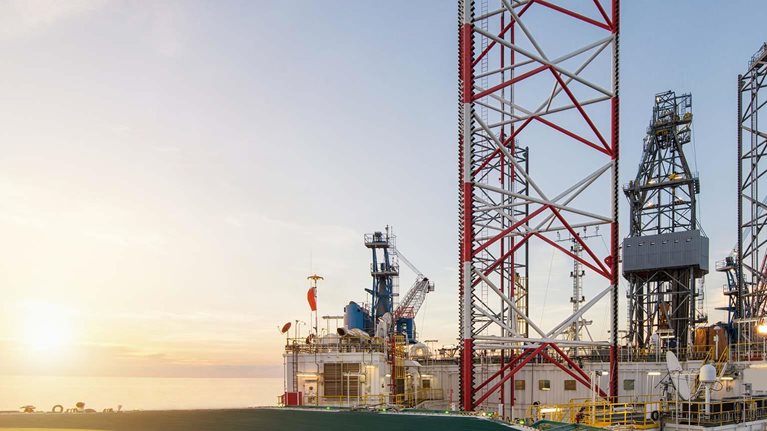Global gas demand will continue to grow over the next 20 years. In 2035, the world will consume 20 percent more gas than in 2017, with a compound annual growth rate (CAGR) of 1 percent. This will be supported by growth in power demand (1.4 percent CAGR), petrochemicals (2.7 percent CAGR), and transportation (9.7 percent CAGR). The greater part of the growth—280 billion cubic meters (bcm) of 770 bcm—will come from China (Exhibit 1).

Demand in China will more than double by 2035, and it will continue to grow, largely driven by strong air-quality policies (Exhibit 2). Where will the gas for China come from?

- In 2017, 64 percent of Chinese demand was covered by domestic supply. Local supply could grow from 153 bcm in 2017 to 230 bcm in 2035, resulting in a decline in the domestic supply share to 45 percent.
- An additional 15 percent comes as piped gas, mostly from Turkmenistan via the Central Asia–China pipeline (35 bcm per annum [bcma]) and Myanmar (three bcma). This share will increase as Russia’s Power of Siberia pipeline comes online in 2019 and reaches its full capacity of 38 bcma by 2025. We also expect growth in utilization of the Central Asia–China pipeline (current capacity is 55 bcma) and construction of the fourth pipeline, line D, from Turkmenistan, with a capacity of 30 bcma.
- Liquefied natural gas (LNG) projects provided 52 bcm in 2017 and balanced the market.
- In the future, all balancing volumes may come as LNG or via new pipelines. The demand yet to be met is projected at about 50 bcm in 2025 and about 100 bcm in 2035 (excluding demand already covered by current LNG supply).
There is a promising option for delivering additional Russian gas to the Chinese market through expansion of the Power of Siberia pipeline and competition with LNG to conquer market share:
- Russia has abundant gas reserves in West and East Siberia.
- Compared with LNG cargoes, Russian natural gas delivered to China has a competitive cost, including all additional capital expenditures.
- Alternative monetization options for Russian gas (for example, gas to chemicals and fertilizers) have less scale and do not allow extensive development of the abundant resource base.
Would you like to learn more about our Oil & Gas Practice?
In 2017, Russia produced 691 bcm of gas; 66 percent of this was consumed domestically, and the rest was exported, mainly to Europe by pipeline. Russia has 70 trillion cubic meters of recoverable gas reserves and a reserves-to-production ratio of about 100 years (Exhibit 3). The main natural-gas production region is Yamalo-Nenets Autonomous Okrug (YaNAO) in West Siberia, accounting for 80 percent of production and 55 percent of reserves. Another promising area with significant gas reserves is East Siberia (Krasnoyarsk, Irkutsk, and Yakutia).

The cost of legacy gas production in Russia is $0.5 to $1.0 per million British thermal units (mmbtu) at the wellhead, including capital expenditures and the mineral-extraction tax. New supply from East Siberia is more expensive (Exhibit 4).

Currently there is no pipeline taking natural gas from YaNAO to East Siberia and further to China, but the Power of Siberia pipeline will connect China with East Siberia by 2019 (Exhibit 5). The additional distance of approximately 1,500 kilometers (half the length of the current Power of Siberia pipeline) should be covered by a new pipeline to connect West and East Siberia (the Tomsk and Irkutsk regions, respectively).

The total cost of natural gas delivered to China through the potential new pipeline from Russia is about $6 per mmbtu for East Siberian gas and $6 to $7 per mmbtu for West Siberian gas, including the cost of transportation from YaNAO to Tomsk, the new Tomsk–Irkutsk pipeline capital expenditures, and all taxes. This is $1 to $2 per mmbtu lower than the future full cost of key LNG players (excluding Qatar). When we add about $1 per mmbtu as a transportation tariff from the Russian border to the demand center in East China, Russian gas remains one of the cheapest options (Exhibit 6).

This makes extra gas volumes from Russia potentially competitive against future LNG cargoes. Another 50 to 70 bcma of Russian natural gas could find its way to China in 15 to 30 years, providing up to a $3 billion shareable surplus per year to Russian producers and Chinese customers.

Global Gas & LNG Outlook to 2035
The main alternative monetization option for Russian gas from YaNAO is LNG: even without tax allowances, the full cost of LNG from the Yamal peninsula in China is $6 to $7 per mmbtu, depending on the shipping route (the Northern Sea Route is cheaper). At the same time, LNG is not a viable option for the landlocked resource base of East Siberia. Alternatives are ammonia and urea production, methanol and derivates production, and gas to liquids. Proven technologies for these options are capital-expenditure intensive ($1.0 billion to $1.5 billion per one bcma of gas feedstock) and support a maximum unit capacity of 1.5 to 3.0 bcma, which is not comparable with the typical pipeline capacity of ten to 30 bcma.
The possibility of delivering additional gas volumes from Russia to China through an expanded Power of Siberia pipeline should be considered by Russian and Chinese oil and gas companies as well as by global LNG players in their strategic perspectives.

